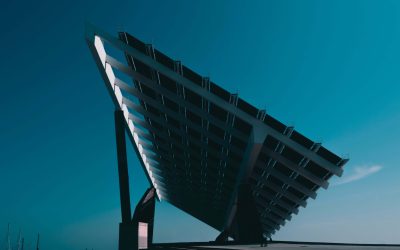Agrivoltaics is advancing rapidly!
Specialty design for ranching, orchards, vegetables, vineyards, berries, poly-culture, multi-species animal production.
Learn about Bifacial fencing, PVT, BIPV and BAPV during a Free Initial Consult if you qualify.
Agrivoltaics combines agriculture with solar production and energy storage to offer a unique and cost-effective way to produce renewable energy while promoting sustainable agriculture practices. This approach allows farmers to use their land for both energy production and crop cultivation, maximizing resources and minimizing environmental impact. Until 2027, we are in a “sweet spot“ never previously seen for state and federal support to add renewable energy to ranch and farmland.
A recent client saw their estimated initial capital investment of $148,000 90+% recovered by year three, meaning the capital outlay end up under $10,000! This included building a barn, greenhouse, EV charging stations and multi-paddocks on 7 acres.
Our goal is to provide valuable insights on agrivoltaics and support you in deploying agrivoltaic solutions effectively on your farm or ranch. We offer practical advice on implementing agrivoltaics, tips on systems integration to maximize efficiency, and case studies to show how other farmers and ranchers are getting on.
Explore how solar may be your path to increased resilience and security
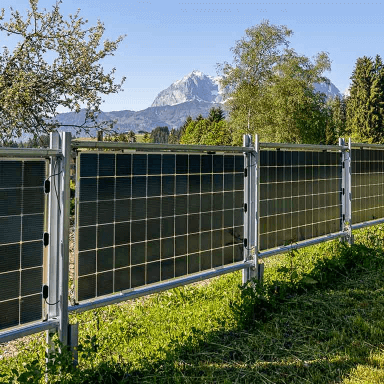

Solar Fences
Solar farm fences are electrified barriers fueled by sunlight, effectively safeguarding crops and livestock with sustainable power.
Bifacial solar panels
They are designed to capture sunlight from both sides, generating electricity from direct sunlight on the front side and reflected or diffused light on the back side.
For a 50-acre bifacial solar fencing system, the energy production could range from several hundred kilowatt-hours to several megawatt-hours, depending on the specific characteristics of the installation.
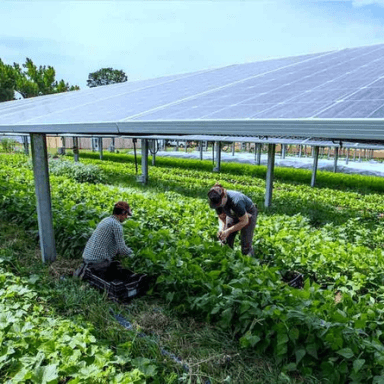

Solar arrays with crops
Solar arrays with crops combine solar energy generation with agricultural production, maximizing land use efficiency and promoting sustainable farming practices.
Solar arrays with crops
Several crops thrive in the presence of solar arrays due to the partial shading they provide.
Examples include leafy greens (lettuce, spinach), herbs (basil, cilantro), brassicas (kale, broccoli), and some fruits (strawberries, raspberries), which benefit from the moderated microclimate and reduced water evaporation.


Solar arrays with grazing
This approach optimizes land utilization, reduces soil erosion, enhances biodiversity, and provides shade for livestock.
Solar arrays with grazing
Multiple advantages are gained by integrating renewable energy generation with livestock management.
This approach maximizes land use efficiency, reduces vegetation maintenance costs, promotes soil health through natural fertilization, and enhances the overall sustainability of the agricultural system, benefiting both energy production and animal welfare.
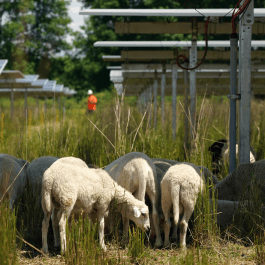

Solar arrays with pollinator grazing
This approach supports biodiversity, enhances crop pollination, and conservation of vital pollinator species.
Solar arrays with pollinator grazing
Pollinator habitats provide several benefits for farming. They enhance crop pollination, resulting in increased yields and improved quality of fruits, vegetables, and seeds.
Pollinators also contribute to the genetic diversity of plants, enhance ecosystem resilience, and support the growth of wildflowers and native plant species, creating a more sustainable and biodiverse farming ecosystem.
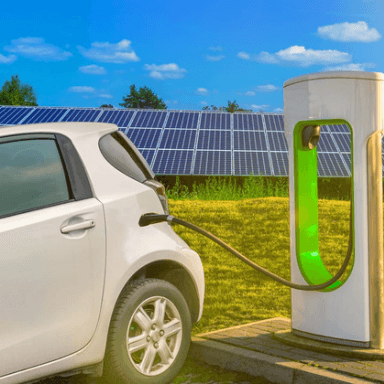

Charging stations
Solar energy generation with an electric vehicle charging station attracts eco-conscious customers to your farm stand and helps diversify your income streams.
Solar vehicle charging
Adding a vehicle charging station to your solar energy system diversifies income through electric vehicle charging while providing reduced dependence on traditional agricultural income alone.
It promotes sustainability by encouraging the use of clean energy for transportation, aligning with environmental goals and attracting eco-conscious customers.
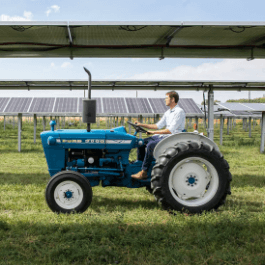

Farm EVs
An electric farm vehicle fleet powered by bifacial solar fencing or solar arrays leads to energy freedom. Electric trucks, tractors and ATVs provide backup battery storage.
Solar-powered farm fleet
EV benefits include reduced fuel costs, lower maintenance expenses, decreased carbon emissions, and increased energy independence. Farm EVs include electric utility vehicles, electric tractors, electric ATVs and electric trucks.
EVs offer quiet operation, reduced maintenance needs, and lower operating costs, while contributing to a more sustainable farming operation.
Is your operation is a good fit for agrivoltaics? Receive an example Strategic Report


Is fuel a concern?
Electricity, fuel oil, gasoline, diesel are all significant variable expenses.
1. A quick and easy assessment
While there’s a lot to consider, the example Agrivoltaics Strategic Report will give you all the important details.


Long term contracts with utilities
Investment capital available. Reasonable ROI. Solar is now a mature industry with incentives supporting adoption.
2. All info shared is kept private
Your answers to the questionnaire will help us determine which information is most relevant to you.
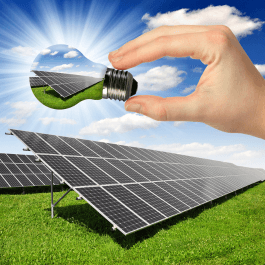

Agrivoltaics Strategic Report
The example Strategic Report covers the many details to be considered when exploring integrating significant solar production.
3. Example Agrivoltaics Report
The free 40 page example report includes a detailed breakdown of what the full assessment involves.
Our Blog
Unleashing Tomorrow’s Power: A Dive into Bifacial Solar Fence Systems
Bifacial Solar Fence Systems combine power generation and precision irrigation, revolutionizing sustainable energy and offering cost savings and efficient maintenance for a greener agricultural future.
Solar-Powered Dairy Farm in the Netherlands
By installing solar panels above the cowshed, the dairy farm has not only generated clean energy to power their operations, but it has also provided shade for the cows.
Agrivoltaics at Oregon Vineyard
King Estate Winery realized that they could do more to support sustainable wine production and reduce their carbon footprint. That’s where agrivoltaics came in.




